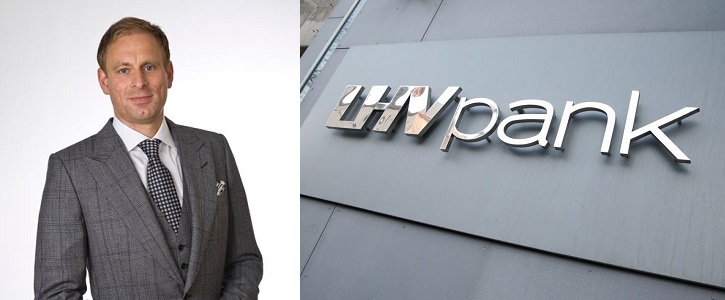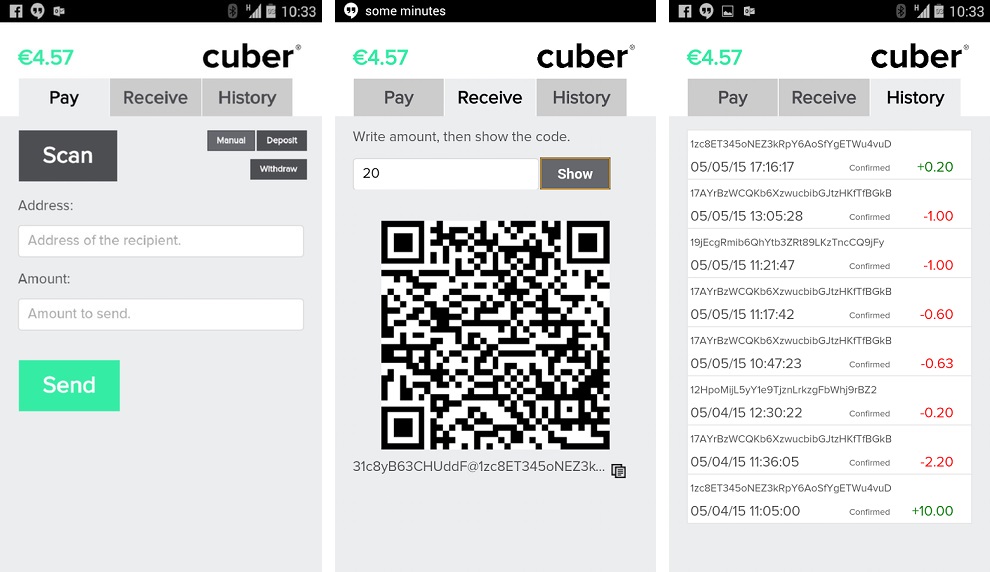Cointelegraph spoke with Rain Lõhmus of Estonia’s LHV Bank about experimenting with the blockchain via colored coins, bitcoin-based certificates of deposit, and the country’s attitude toward technology and innovation.
Rain Lõhmus is the Chairman of the Supervisory Board at LHV Bank, Estonia’s largest independent bank, which recently backed a FinTech platform and money-transfer app that will use Bitcoin to facilitate transactions.
Lõhmus is also the CEO of Cuber Technology, a subsidiary of LHV Group, the developer of the open-source Cuber Wallet app enabling users to send and receive euros instantly and at no cost.
“The Bitcoin blockchain is the oldest, most tested and secure [public-key cryptography], and hence suitable for our current applications.”
— Rain Lõhmus, Chairman of the Supervisory Board, LHV Bank

Cointelegraph: What is LHV and what is its share on the Estonian market?
Rain Lõhmus: LHV is the largest locally owned (independent) bank and asset management company in Estonia. LHV is the 5th largest bank and 2nd largest pension fund manager in the country.
Started as a brokerage firm, it received its bank license in 2009. Founding shareholders were co-founders of Hansabank (later renamed Swedbank in the Baltics after acquisition) — the most successful regional bank — created in 1991.
LHV aims to mix 21st-century technology with 19th-century relationship banking. We are relying heavily on the Internet (operating only two branches for consulting and mandatory physical customer identification purposes) and are cashless. The aim is to keep the organization relatively small and highly efficient. Bank services primarily include SME-s and retail clients.
“All Estonian government and finance infrastructure relies heavily on public-key cryptography, hence it is a natural step to investigate and test different variations of that.”
CT: Why did you decide to experiment with the Bitcoin blockchain, and how can it help your business?
RL: We believe blockchain technology is a great innovation commanding certain unique characteristics compared to ordinary centralized databases. Hence, the blockchain is potentially more suitable for some (this does not mean all) banking and finance related applications. All Estonian government and finance infrastructure relies heavily on public-key cryptography, hence it is a natural step to investigate and test different variations of that.
The Bitcoin blockchain is the oldest, most tested and secure and hence suitable for our current applications. However it should not stay static, but develop quicker to avoid becoming obsolete. We are also naturally following alternative solutions.
CT: The Cuber Wallet app uses colored coins. Does this mean it still uses Bitcoin and could you explain how this works?
RL: Cuber Wallet does use bitcoins, but as a data carrier. We are using open colored coins’ EPOBC [enhanced padded order-based coloring motivation] standard developed by Alex Mizrahi. It means we are “painting" bitcoin by adding unique markers to them, which then represents a claim in fiat currency against LHV Bank, as the entry into Oracle’s database represents a claim against the traditional bank system.
“The merchant does not have to deal with bitcoins — he should not even know what it is.”

CT: Does this mean bitcoins can be used with the app at any retail location that accepts fiat currency, i.e., euros?
RL: The merchant has to approve this payment method just as they have to approve credit cards, etc. We are currently still testing it in few physical locations. However, I see much bigger use for that in online business, particularly for smaller payments.
The merchant does not have to deal with bitcoins — he should not even know what it is. I draw a parallel with the car industry — most cars are still powered by a series of explosions within the combustion engine, but the driver does not have to worry about that and industry does not advertise their product in this way.
CT: Could you talk about the bitcoin-based digital security (certificate of deposit) that you are also working on? How will this work and when could we expect this to come out?
RL: It is important to separate two things: LHV Bank-issued CUBER (Cryptographic Universal Blockchain Entered Receivable) securities, which are technically bank certificate of deposits recorded in the Bitcoin blockchain.
“The bank views [bitcoin-based digital securities] as a Lego building block for financial innovation.”
They are denominated in euros, may pay interest (not in today’s environment) and are suitable for various purposes — store of value, medium of exchange, trust and escrow services and, in the future, even for machine-to-machine transactions (due to basic scripting possibility). The bank views it as a Lego building block for financial innovation.
Then, there’s the Cuber Wallet, which is a piece of software for mobile phones, enabling P2P transactions using underlying CUBER securities. In fact, it is just the first demonstration of real CUBER usability.
LHV Bank has issued the first 100,000 euros worth of CUBERs for testing. There are naturally a number of issues the bank wants to research and test before scaling up.
“The main challenge is developing a simple, secure and legally compliant bridge between crypto and traditional banking.”
CT: You indicated last year that you saw this as an opportunity to "explore what could be built on top of the underlying technology." What do you think of this technology so far, and what kind of feedback have you received from your users?
RL: The initial feedback for Cuber Wallet has been positive — the technology seems to work well and so far there have been no major consumer side issues. The main challenge is developing a simple, secure and legally compliant bridge between crypto and traditional banking. Right now, Cuber Technologies, Ltd (developer of the wallet) is focusing on this first product. There are some other new product ideas, but as always resources are limited.
CT: With other banks, such as Citi and JPMorgan, looking into blockchain technology, as well as new competition from the FinTech sector (P2P transactions, Lending Club, etc.), do you think traditional banking is on the verge of being seriously disrupted?
RL: LHV is clearly having a retail approach, utilizing existing reliable components (Bitcoin blockchain). I believe Wall Street is looking more into wholesale trading and settlements. Blockchain technology is best suited for trustless P2P transactions where counterparties do not know or trust each other. I am not convinced interbank dealings fit well into that pattern.
CT: Many traditional players have shown interest in blockchain tech while dismissing bitcoin the currency. Do you also share this view?
RL: Bitcoin tends to carry some libertarian political, even semi-religious message. As a rationalist, I tend to believe this side is going to disappoint many followers. I view it more as a beginning of a new technological thinking and if it manages to reform and develop itself, it can have a bright future. As a currency, I do not find it very useful as of today.
“Estonian authorities generally tend to interpret laws quite narrowly and Bitcoin does not fit well into that.”
CT: Estonia is known to be a tech hub, producing such innovations as Skype, while being home to many BTC-accepting merchants. Do you think Estonia is on its way to becoming a hotbed for blockchain technology?
RL: Unfortunately, Estonia is not particularly a Bitcoin-friendly country at the moment. Neither is Bitcoin particularly popular. You cannot compare us to Israel. Estonian authorities generally tend to interpret laws quite narrowly and Bitcoin does not fit well into that.
But 10 years ago, we had a similar attitude towards green energy and it has changed significantly since then. And Estonia continues to be generally supportive towards technology and innovation. And it likes to be a spokesperson in the EU on IT matters. We think we might have a chance.

